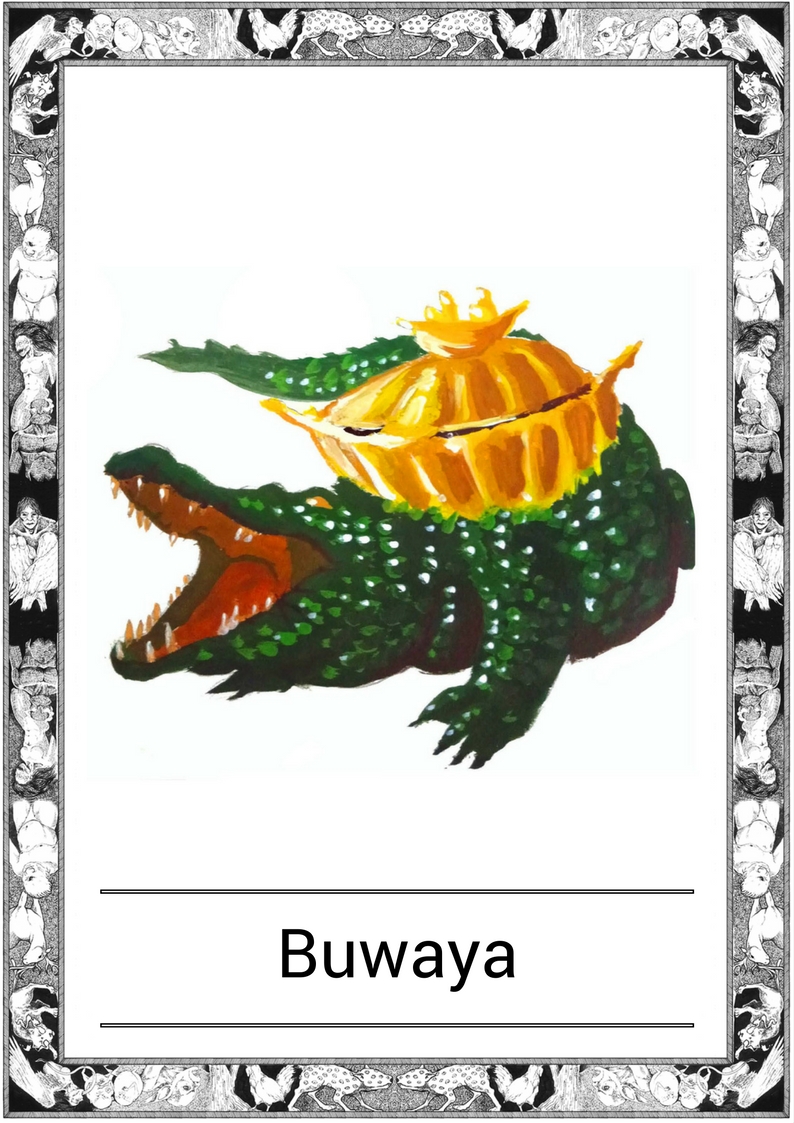
*Note this story is in Ilocano
Buaya
Daytoy ti disso.
Ginaw-at ni Miguel ti umuna a nakalapanna sa immanges ti nauneg. Maysa a dakkel nga ikan, banag a mabalinna nga ipagpannakkel kadagiti dadduma a mangngalap, ngem makauray ti sabali nga aldaw dayta panagpasindayag.
Ar-aramidenna ti panangyatang ket saan a mabalin a madistorbo.
“Nono*,” idatagko daytoy a regalo kenka. Sapay ta awatem daytoy datonko.”
Naguray ni Miguel, masapul a respetuenna ti tradisyon babaen ti panangimatangna iti panangibus daytoy iti nakalapanna.
Limmabas ti maysa nga oras, isun ti pannakakitana iti kahon. Ti daton ket inawatna sa nagsubli daytoy iti adalem tapno nanamenna ti kanenna.
Saan nga ammo ni Miguel ti nangruggian dayta a tradisyon. Kanayon idi a masmasdaaw no apay nga ited dagiti mangngalap dagiti umuna a maalada, uray kasano ti kadakkel daytoy.
Ammona nga dayta a buwaya ket gayyem ti aswang ken makipagbagi met iti lasag ti tao no nakaro ti bisinna, ngem ti simple a panagbuteng ket saan nga umanay a mangiladawan iti panagiyatang.
Daytoy ket panagdaydayaw, awan mulitna ken nanumo. Adda banag iti buwaya nga mangawis ti panagdaydayaw. Napanunotna ti rason no apay a maawagan iti lilong ti buwaya.
Siguro ket dati daytoy a tao, nga inlunod dagiti didiosen, ket sapulenna ti panagraem dagiti kaputotanna.
Mabalin a daytoy ket agpaspasyar nga espiritu a mangted iti nawadwad a makalapan kadagiti makalagip ti tradisyon.
Mabalin a maysa a mawaw ti dara nga animal a masapul a mapakan sakbay a mapanna biruken ti anupenna.
Ngem ania dayta kahon iti likodna? Idulinna ngata dagiti biktimana dita sakbay a kanenna ida, wenno adda nakarkaro a misterio nga aggungunay?
No aniaman dagiti sungbat, makagin-awa ni Miguel nga awan isuna iti uneg ti kahon, ken naragragsak ta makaawiden.
“Agpakadaak pay, Nono, agingga iti sumaruno,”inyarasaasna iti karayan.
*Kayatna a sawen lilong wenno aswang
=——————————-=
English Version
“This is the spot.”
Miguel reached for his first catch and breathed deep. It was a large fish, something that he would be proud to show to the other fishermen, but pride could wait another day.
He was performing the panangyatang and he would not be disturbed.
“Nono* I present this catch to you. Please accept my offering.”
Miguel waited, he had to respect the tradition by witnessing it finish eating his catch.
An hour passed, then he saw the box. The offering had been accepted and it would be going back to the depths to enjoy its meal.
Miguel didn’t know when the tradition started. He always wondered why fishermen would give up their first catch, no matter how big.
He knew that the buwaya was a friend to the aswang and partook of human flesh when it was particularly hungry, but simple fear wasn’t enough to explain the panangyatang.
This was respect, pure and simple. There was something about the buwaya that commanded reverence. He thought to the reason why the buwaya was called ‘grandfather’.
Maybe it was human once, cursed by the gods, and it seeks the respect of its descendants.
Maybe it is a wandering spirit bringing a bountiful catch to those that remember the traditions.
Maybe it is a bloodthirsty beast that needs to be fed before it seeks out human prey.
And what of the box on its back? Does it just keep its victims there, until it is time to feed, or is there something more mysterious at work?
Whatever the answers, Miguel was glad not to be in that box, and even gladder that he was on his way home.
“Goodbye nono*, until the next time,” he whispered softly to the river.
*Means grandfather or ghost
————————–
*Ilocano is the third most-spoken local language of the Philippines.An Austronesian language, it is related to such languages as Malay (Indonesian and Malaysian), Tetum, Chamorro, Fijian, Maori, Hawaiian, Samoan, Tahitian, Paiwan and Malagasy. It is closely related to some of the other Austronesian languages of Northern Luzon, and has slight mutual intelligibility with the Balangao language and the eastern dialects of the Bontoc language.
Written by Karl Gaverza
Ilocano translation by Maria Jesusa Villaruz
Copyright © Karl Gaverza
Translation Copyright © Maria Jesusa Villaruz
Inspired by the buwaya description in El Folk-lore Filipino. Isabelo de los Reyes, trans. Dizon and Peralta-Imson. 1994. (Original Spanish Manuscript Printed 1889)
Buwaya Illustration by Kael Molo of Agla – The Graphic Novel
